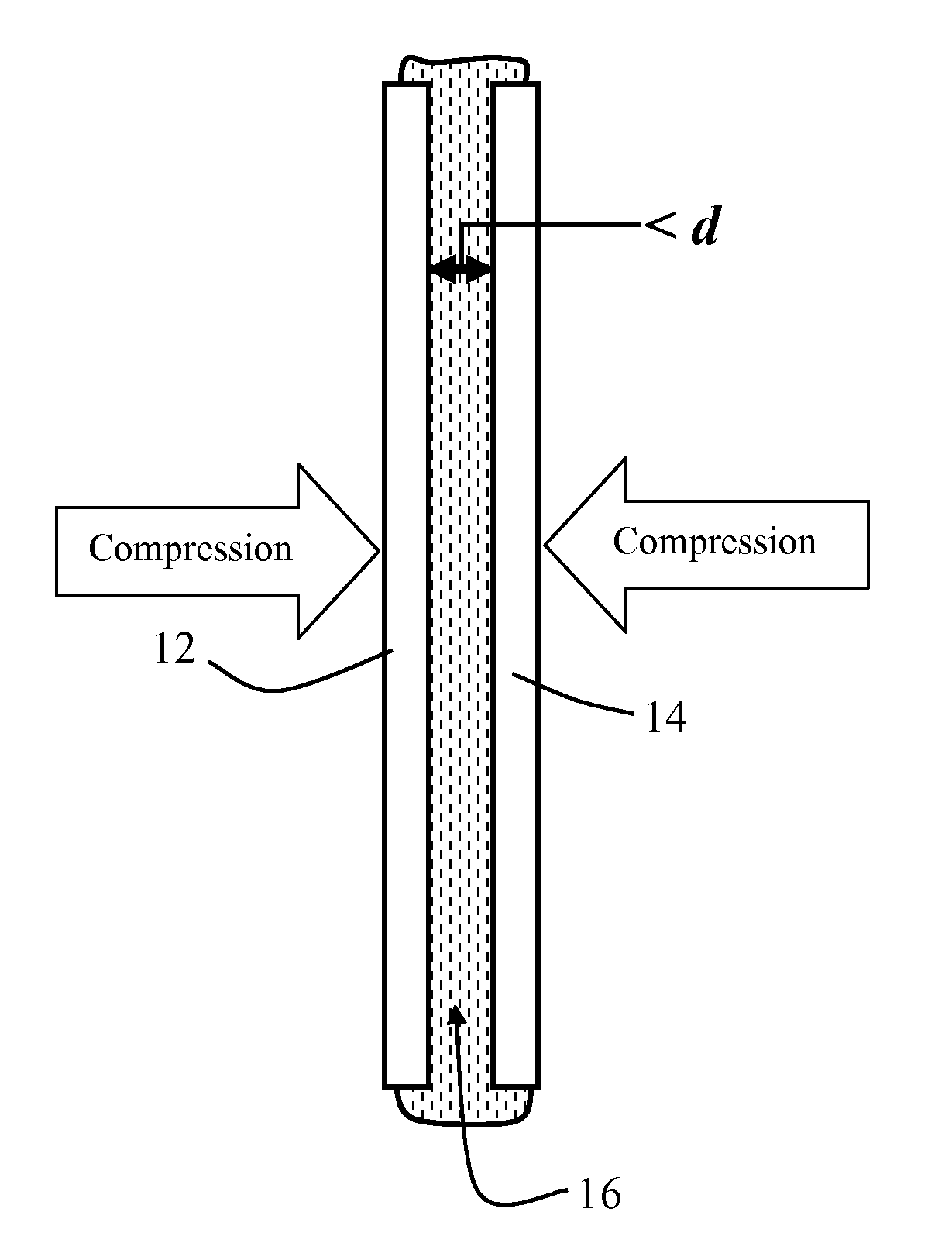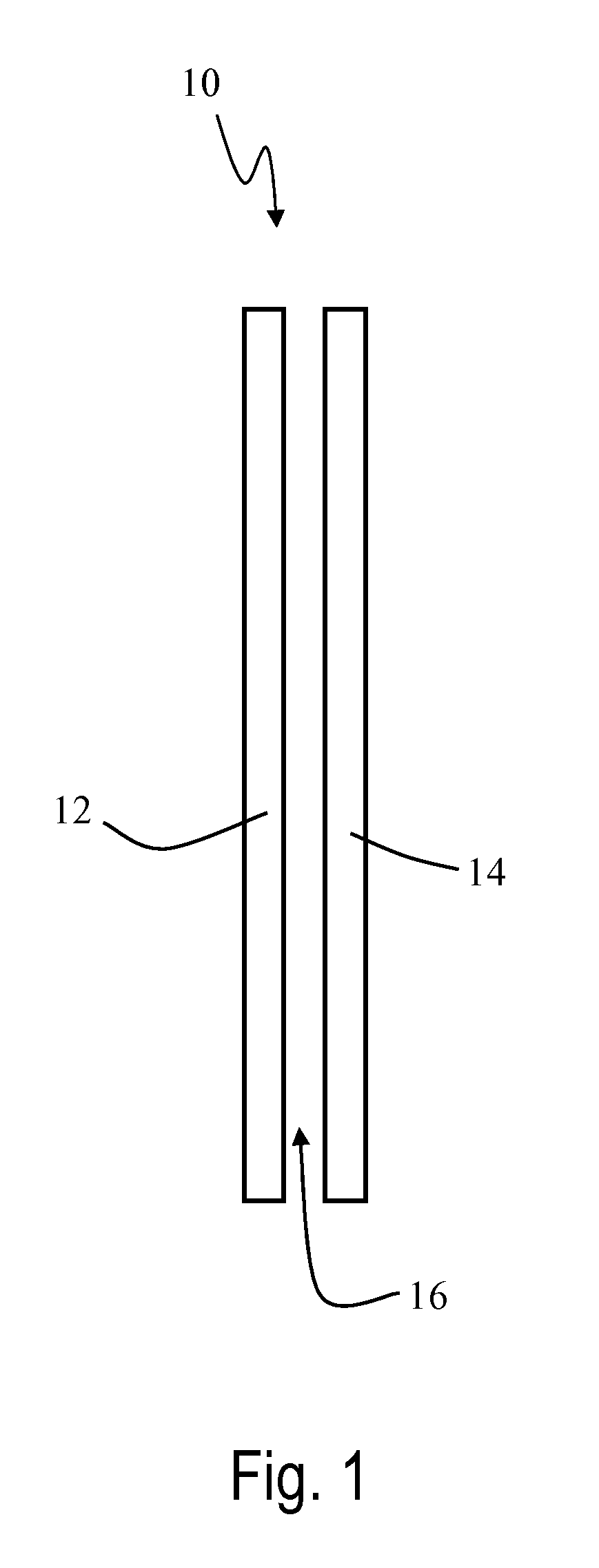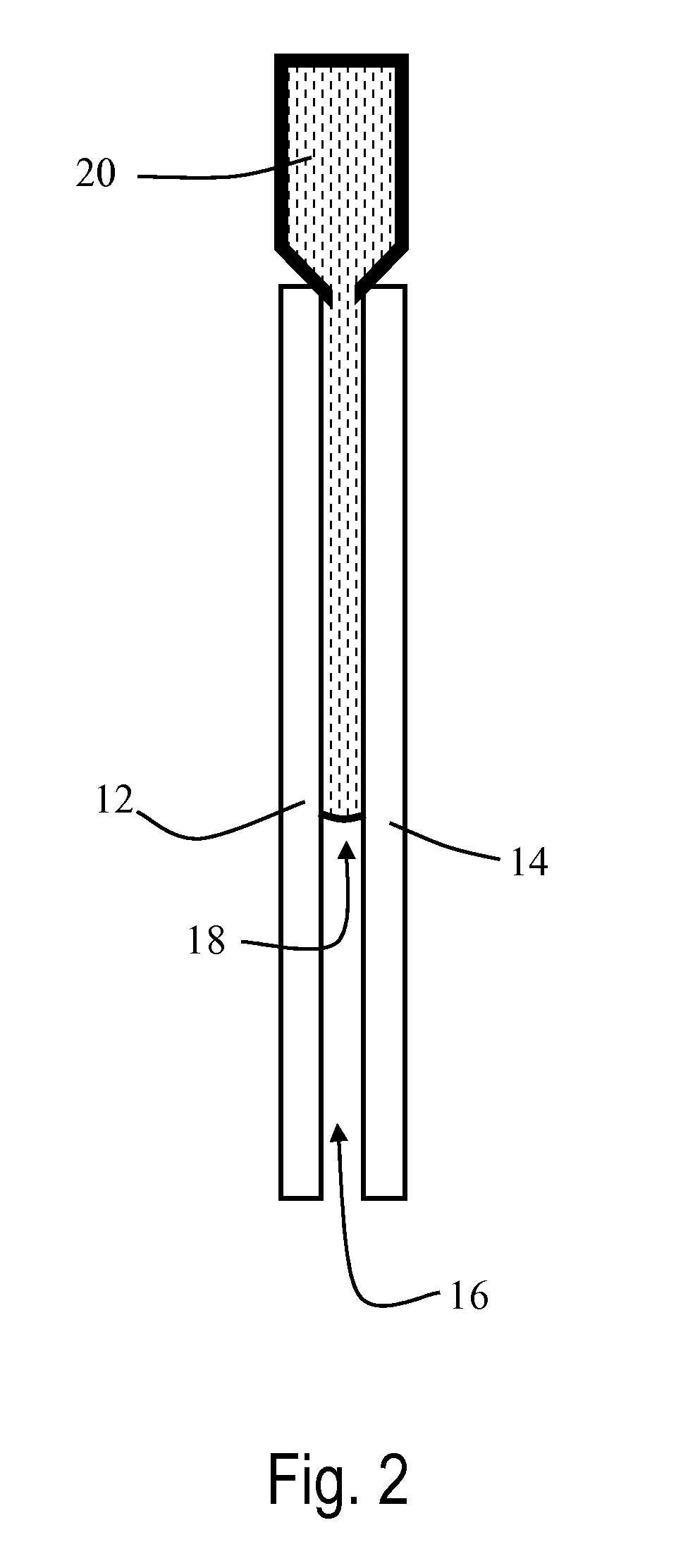Injection molded multiple layer glazings
- Summary
- Abstract
- Description
- Claims
- Application Information
AI Technical Summary
Benefits of technology
Problems solved by technology
Method used
Image
Examples
example 1
[0074]The following table represents a computer generated modeling of injection molded flow characteristics for injection of low molecular weight plasticized poly(vinyl butyral) having a molecular weight range of 40,000 to 100,000, heated to a melt temperature of 220° C. The polymer melt is fed from a series of 51 injection ports spaced evenly along one of the long edges of the part to be filled. The dimensions of the cavity are 1250 mm wide by 750 mm long by 1.2 mm thick. The injection surfaces are heated to 50° C. For the purposes of the simulation, injection time is assumed to be approximately 5 seconds, and the maximum injection pressure supplied by the equipment is limited to 1.72×108 Pascals (25,000 pounds per square inch). Simulations for this and other examples were run using the Moldflow® software package (Moldflow Corporation, Framingham, Mass.).
TimeVolume(Seconds)PercentPressure (Pascals)0.234.912.58E+060.479.516.80E+060.6913.681.28E+070.917.662.00E+071.1321.82.84E+071.36...
example 2
[0075]The following table represents a computer generated modeling of injection molded flow characteristics for injection of the same poly(vinyl butyral) as in Example 1 but with injection surfaces heated to 100° C.
TimeVolume(Seconds)PercentPressure (Pascals)0.234.92.28E+060.459.455.42E+060.714.231.03E+070.918.221.49E+071.1322.482.06E+071.3626.92.71E+071.5831.173.38E+071.835.554.13E+072.0440.084.91E+072.2844.595.75E+072.4848.466.43E+072.7152.787.33E+072.9357.088.17E+073.1561.59.11E+073.38669.99E+073.6170.511.10E+083.8374.841.19E+084.0579.211.29E+084.2983.911.38E+084.588.121.48E+084.7392.81.58E+084.9597.131.68E+085.0599.041.71E+085.061001.36E+08
example 3
[0076]The following table represents a computer generated modeling of injection molded flow characteristics for injection of the same poly(vinyl butyral) as in Example 1 but with injection surfaces heated to 150° C.
TimeVolume(Seconds)PercentPressure (Pascals)0.244.911.91E+060.479.554.02E+060.7114.146.96E+060.9518.899.82E+061.1823.311.33E+071.4328.181.68E+071.6532.562.04E+071.8937.172.42E+072.1341.932.82E+072.3646.253.21E+072.6251.213.60E+072.8355.224.03E+073.0659.694.44E+073.364.44.91E+073.5368.985.33E+073.7773.595.82E+07478.266.27E+074.2483.016.76E+074.4787.427.21E+074.791.997.68E+074.9897.478.24E+075.0699.128.38E+075.071006.70E+07
PUM
| Property | Measurement | Unit |
|---|---|---|
| Temperature | aaaaa | aaaaa |
| Temperature | aaaaa | aaaaa |
| Mass | aaaaa | aaaaa |
Abstract
Description
Claims
Application Information
 Login to View More
Login to View More - R&D
- Intellectual Property
- Life Sciences
- Materials
- Tech Scout
- Unparalleled Data Quality
- Higher Quality Content
- 60% Fewer Hallucinations
Browse by: Latest US Patents, China's latest patents, Technical Efficacy Thesaurus, Application Domain, Technology Topic, Popular Technical Reports.
© 2025 PatSnap. All rights reserved.Legal|Privacy policy|Modern Slavery Act Transparency Statement|Sitemap|About US| Contact US: help@patsnap.com



